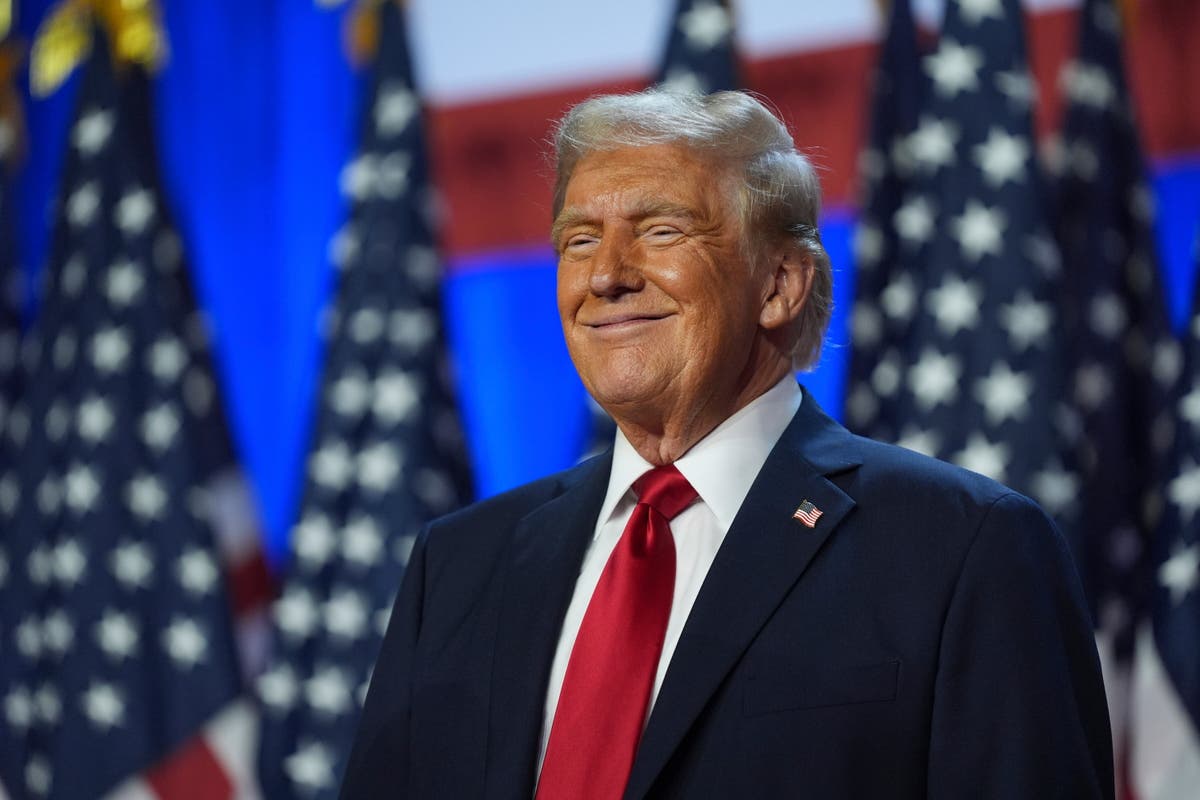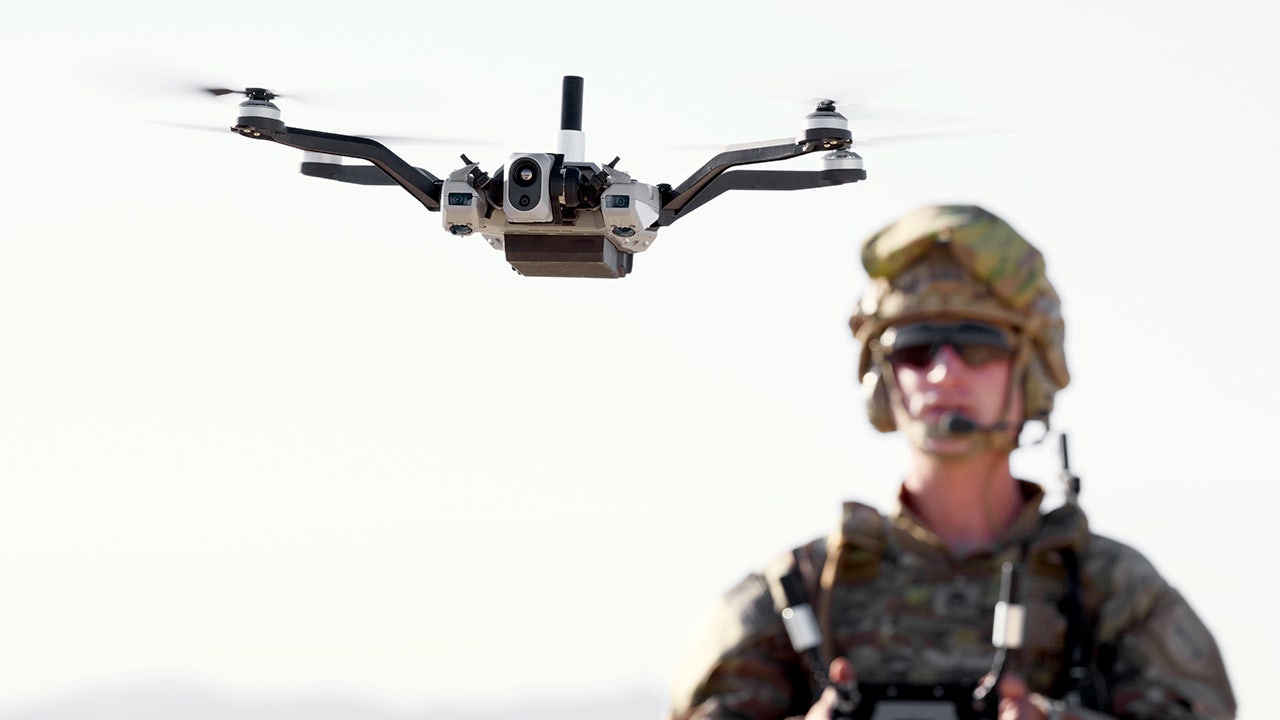World
Live updates: Iran President Ebrahim Raisi dies in helicopter crash; US offers condolences

Watch: Iranians gather in prayer to mourn President Raisi
A helicopter carrying the Iranian president, foreign minister and other officials crashed into a hillside. There were no survivors.
Iranian President Ebrahim Raisi, Foreign Minister Hossein Amirabdollahian and other officials were killed in a helicopter crash in mountainous terrain near the Azerbaijan border, officials and state media announced Monday.
Raisi, 63, and Amirabdollahian, 60, were traveling in a convoy of three helicopters from Iran’s border with Azerbaijan in the country’s mountainous northwest after inaugurating a joint dam project. The helicopter went down in heavy fog in a remote area Sunday, and search operations were hindered by the fog, blizzard conditions and difficult terrain. The bodies of all eight on board were found Monday.
State Department spokesman Matt Miller said Monday that the U.S. offers its “official condolences” for the Iranians killed in the helicopter crash. “As Iran selects a new president, we reaffirm our support for the Iranian people and their struggle for human rights and fundamental freedoms,” Miller said in a statement.
Raisi’s death is not expected to upend Iran’s domestic or foreign politics. But it does come at a time of raised international tensions and increases speculation over who will eventually replace Iran’s Supreme Leader Ayatollah Ali Khamenei. Raisi was viewed as a possible successor to the 85-year-old cleric.
Iranian president: Here’s what to know about Ebrahim Raisi
Developments
∎ Mohammad Mokhber, Iran’s vice president, was appointed acting president. Mokhber appointed Iranian nuclear negotiator Ali Bagheri Kani acting foreign minister. Iran declared five days of public mourning.
∎ State media reported the U.S.-made Bell 212 helicopter may have slammed into a mountain peak, although there was no official word on the cause of the crash. Iran’s Red Crescent published video footage showing rescue teams recovering bodies from the crash site.
∎ The deaths of Iran’s president and its top diplomat deprive the country of two senior politicians at a time when Iran and the broader region are on edge because of the Israel-Hamas war in Gaza and recent direct military exchanges between Iran and Israel that risked sparking a wider regional conflict. Domestically, Iran’s theocratic government has been facing anger over corruption, its sanctions-hit economy and calls for an end to clerical rule.
Iran’s President Ebrahim Raisi dies in Vietnam-era Bell 212 helicopter crash on mountain
Jamal Abdi, president of the Washington-based National Iranian American Council, said the deaths create a void in leadership amid a deepening legitimacy crisis for the Islamic Republic. Raisi’s election was “highly choreographed, even by the Islamic Republic’s standards,” he said, as hardliners consolidated power. But the cost of excluding moderate and reform candidates was a drop in turnout.
“The state will now weigh its interest in mobilizing public participation in an unprecedented election at a time of great regional turmoil against its fears of popular challenges to its rule amid domestic unease,” Abdi said in a statement. “The divides between state and society will only deepen if the Guardian Council only approves a narrow list of conservative regime insiders to run for the Iranian presidency.”
Maryam Rajavi, president-elect of the Paris-based National Council of Resistance of Iran, said the deaths represent an “irreparable strategic blow” to the regime.
“It will trigger a series of repercussions and crises within theocratic tyranny, which will spur rebellious youths into action,” Rajavi said.
Government supporters filled mosques and squares to pray for the crash victims. Mohammad Hossein Zarrabi, 28, a member of the volunteer Basij religious militia in the holy city of Qom, called Raisi a hard worker whose “legacy will endure as long as we are alive.”
Other Iranians had a different view.
“Who cares. One hardliner dies, another takes over and our misery continues,” said Reza, 47, a shopkeeper in the central desert city of Yazd who did not give his full name to Reuters, fearing reprisals. “We’re too busy with economic and social issues to worry about such news.”
The helicopter was a civilian version of the Vietnam War-era “Twin Huey” that today is popular with governments and private helicopter companies around the world. Iranian media said the helicopter that went down was connected to the Islamic Republic Red Crescent Society, and experts suggested it may have been more than 40 years old.
Although the cause of the crash was still under investigation, former Iranian Foreign Minister Mohammad Javad Zarif blamed the crash on U.S. sanctions that make aviation replacement parts difficult to obtain in Iran.
The aircraft that crashed was built by Bell Helicopter, now Bell Textron, a division of Textron Inc., a Fortune 500 company based in Providence, Rhode Island. The helicopter, which seats about 15, was developed for the Canadian military in the late 1960s and introduced for civilian use a few years later. Non-military organizations that fly the Bell 212 include many U.S. law enforcement agencies and fire departments, Japan’s Coast Guard and Thailand’s national police, among others.
The most recent fatal crash of a Bell 212 was in September 2023, when a privately operated aircraft crashed off the coast of the United Arab Emirates, according to the Flight Safety Foundation.
Iran’s air force and navy have 10 of the helicopters, according to FlightGlobal’s 2024 World Air Forces directory. It’s not clear how many the civilian government owns and flies.
Chinese foreign ministry spokesman Wang Wenbin said Raisi’s death was “a great loss to the Iranian people” and that China had lost a good friend. Russian President Vladimir Putin described Raisi as a “true friend of Russia” and an “outstanding politician.” European Council President Charles Michel said the EU “expressed its sincere condolences” to the families of all those killed.
Saudi Arabia’s King Salman bin Abdulaziz, whose country has seen tensions with Iran ease somewhat in recent months, extended “deepest sympathy” to the Iranian people.
Syrian President Bashar al-Assad, Lebanon’s Foreign Minister Abdallah Bou Habib and leaders of Hezbollah all offered their condolences, and Syria and Lebanon declared three days of mourning.
Khamenei, Iran’s supreme leader, has the final say on all major policy decisions. However, according to Iran’s constitution, the vice president takes over if the president is not able to execute his duties because of illness or death. That means power has been transferred temporarily to Mokhber, 68, who has been Raisi’s No. 2 since the election in 2021 that handed Raisi the presidency. Khamenei ordered Mokhber to work with the Iranian judiciary to arrange an election within 50 days. Hopefuls for the job must have their candidacies approved by Khamenei’s regime.
Mokhber is close to Khamenei, and like Raisi is a politically conservative hardliner when it comes to issues such as violating “morality” laws, clampdowns on protests and nuclear talks with the West. He hails from Iran’s southwestern Khuzestan Province on the Iraqi border and the Persian Gulf. He was a Revolutionary Guard Corps officer in the 1980s and is a former head of Setad, a powerful economic organization controlled by Khamenei. Setad, despite its billions of dollars in assets, struggled to get effective COVID-19 vaccines to the masses − Iran was among the most hard-hit Middle East nations. The official death toll was nearly 150,000 and the actual one is believed to be much higher.
Setad and Mokhber were sanctioned by the U.S. Treasury in 2021, accused of violating “the rights of dissidents by confiscating land and property from opponents of the regime,” among other things.
The New York-based Center for Human Rights in Iran warned that Raisi’s death could lead to deeper crackdowns on “civil society.” Hadi Ghaemi, executive director, urged the international community to remain vigilant and responsive to any potential escalation of the violent suppression of peaceful dissent under Iran’s new president. Mokhber will be on a three-person panel overseeing the coming election.
“Real alternatives to Iran’s hardliners have simply not been allowed to stand for office in the last few elections,” said Trita Parsi, an expert on Iran and the co-founder and executive vice president of the Quincy Institute for Responsible Statecraft, a Washington think tank.
Inside Iran: America’s contentious history in Iran leads to mix of anger, wonderment and weariness
Raisi ascended to the presidency after a long career of service to the conservative clerical leadership. He worked as a prosecutor assigned to cases connected to the Iran-Iraq war that raged from 1980 to 1988. When it ended, he was one of four judges who allegedly oversaw the mass execution of thousands of political prisoners. Iran has never acknowledged the killings, which Human Rights Watch estimates involved 2,800 to 5,000 people being executed. Activists dubbed Raisi the “Butcher of Tehran.”
Raisi rose through the ranks to be Iran’s top legal official. He lost the 2017 presidential election to a realitively moderate candidate before winning the job four years later, immediately tightening morality laws.
In 2022, Iran was besieged by mass protests after the death of Mahsa Amini, who had been taken into custody for opposing Iran’s strict headscarf – hajib − mandates for women. The demonstrations prompted Raisi’s monthslong crackdown that left hundreds of Iranians dead and thousands detained.
Experts warn that the airtight dominance of Supreme Leader Ali Khamenei and his Revolutionary Guards guarantees that Raisi’s passing won’t bring Iranians any closer to justice for the decades of human rights abuses they’ve endured.
Iran president ‘has blood on his hands’: Ebrahim Raisi and Iran’s prison massacres
No abuses were more severe than the prison massacres of 1988. The prisons were packed with young leftists who’d been convicted for having links to an Iraq-based rebel group, the People’s Mujahedeen Organization of Iran, or Mujahedeen-e-Khalq. In July 1988, after the group launched an attack on Iran from its base in Iraq, Ayatollah Rouholla Khomeni, the Islamic Republic’s founding cleric, called for all PMOI prisoners to face special tribunals. In a secret fatwa, Khomeni ordered officials to “annihilate the enemies of Islam immediately.”
Sitting in judgment at some of these hastily called “death commissions” was deputy prosecutor Raisi, a hardline cleric. The U.S. Treasury Department said in a 2019 sanctions notice that “as deputy prosecutor general of Tehran, Raisi participated in a so-called ‘death commission’ that ordered the extrajudicial executions of thousands of political prisoners in 1988.”
When asked about the killings many years later, Raisi described himself as a “defender of human rights.” Raisi called the killings “one of the proud achievements” of Iran’s government, according to an Amnesty International report. He went on to serve as prosecutor general in Tehran and later as the top prosecutor in the country.
“Raisi was a pillar of a system that jails, tortures and kills people for daring to criticize state policies,” Ghaemi said. “His death has enabled him to escape being held accountable for his many crimes and the state’s atrocities committed under his rule.”
− Dan Morrison
Not a lot. Some theories, mostly conspiratorial in nature and lacking evidence, have sprung up on social media. There’s a tendency in Iran to blame Israel, its chief regional enemy, whenever there is an unexplained accident or death of a public security or nuclear official in Iran.
Tehran has so far been silent on this point. However, Israeli officials have already been anonymously briefing reporters there Monday, saying “it wasn’t us.”
Iran’s isolation from the world has long left it with one of the oldest civil-aviation fleets in the world, and it has facilitated a fatal trend in its aviation-safety record. Western manufacturers, under the sanctions, are prohibited from selling planes and even crucial spare parts to Iran. What’s not known is whether the U.S.-made Bell 212 crashed because of lack of access to spare parts or some other technical maintenance issue.
Contributing: Reuters








